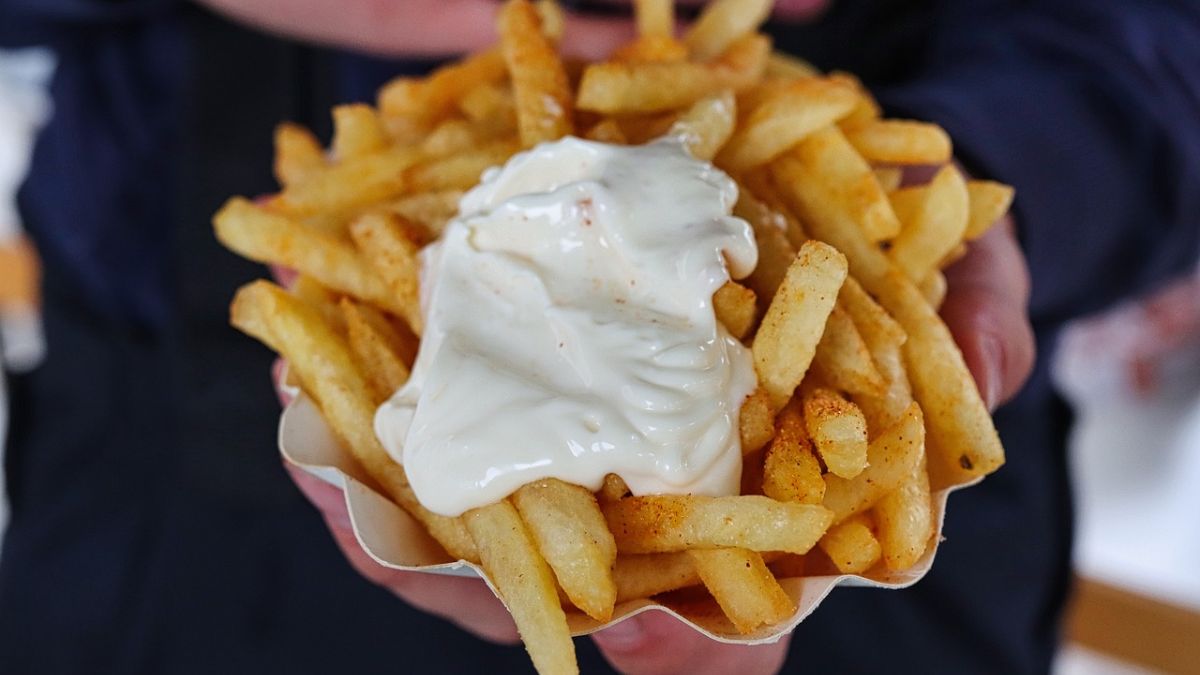As It Happens6:50Frozen sperm could help bring these giant sea stars back from the brink of extinction
Melissa Torres spent her Valentine’s Day helping to usher new life into the world — in the form of millions of fertilized sea star eggs.
Torres is part of a team that, on Feb. 14, successfully spawned and cross-fertilized sperm and eggs from male and female sunflower sea stars at the Birch Aquarium at Scripps Institution of Oceanography in California.
It’s a major step in a massive effort by scientists, governments and conservationists to save an important marine species that has been nearly annihilated by a mysterious wasting disease.
“It was, I will not lie, a lot of jumping and hugging and hooraying and screaming,” Torres, an aquarist at Birch, told As It Happens host Nil Köksal.
“Now we’re all trying to raise these babies so that we have some more animals to put back in the wild someday.”
A grisly disease
Sunflower sea stars are the biggest of the sea stars, growing up a metre in diametre — or, as Torres says, “as large as an extra large pizza.”
They come in a variety of bright colours, and can grow as many as 24 arms, each covered with tiny tube feet they use to scamper across the ocean floor.
“They’re so beautiful,” Torrest said. “They do look exactly like you’d imagine a sunflower or sun that just has all these beautiful rays coming off of a central disk.”
Once abundant in the Pacific Ocean, they have been all but wiped out in the wild over the last decade by a mysterious wasting disease linked to warming ocean temperatures.
The grisly disease causes sea stars’ limbs to fall off and their bodies to disintegrate. First reported in 2013, it has since killed more than 5.7 billion sunflower sea stars — more than 90 per cent of their population.
In southern California, 99 per cent have died, making them functionally extinct.
This has had devastating effects on the ecosystem, which relies on the stars to eat sea urchins, which, in turn, feast on kelp.
“Without these sea stars to forage on the sea urchins, we have actually lost a majority of our kelp forests along the Pacific Northwest coast,” Torres said.
“And these kelp forests provide not only homes, but food, for animals, as well as carbon sequestration.”
The key ingredient is frozen sperm
Scientists, government and conservationists across the West Coast have been collaborating to save the sea stars, using The Nature Conservancy’s “Roadmap to Recovery” as their guiding star.
One key part of that roadmap is breeding them in captivity, with the hopes of one day releasing them back into the wild.
Until now, that has largely been done at the Friday Harbor Laboratories in Washington State, where a team led by biologist Jason Hodin is breeding its second generation of sunflower sea stars, descendants from survivors of the disease in the Salish Sea.
But state restrictions mean Hodin’s lab can’t just ship sea stars from Washington to California for reintroduction.
“That’s where the ecological crisis is the most severe, and so that’s where we need the stars to be bred for actual reintroduction,” Hodin said.
“We consider our efforts up here to be completely complementary and in parallel to what they’re doing down in California, and hopefully supportive.”

On Valentine’s Day, the California team made its first big breakthrough. They injected two stars, one male and one female, with enzymes to make them release clouds of egg and sperm.
They then fertilized the eggs using both fresh and frozen sperm from the same male.
The ability to use frozen sperm, Hodin says, is “really vital” in California, where there are only a handful of sunflower sea stars remaining, all in captivity, and spread out among several aquariums.
“They want to be able to bring in a significant amount of genetic variation when they set up these experiments,” he said. “So being able to preserve sperm and move it around from place to place and use it on demand is just a really important technique.”

Alyssa-Lois Gehman, a marine ecologist at the Hakai Institute and the University of British Columbia, called this an “important step” in saving the sea stars.
But, also noted, it’s “one step of many.”
Gehman, who studies the wasting disease, says scientists also need to learn more about how it works, to ensure that future generations of sea stars won’t also succumb to it and die.
“I think we do have some work to do on that front, just to identify the causative agent and move us towards being able to hopefully control, or at least monitor [the disease] a little bit more carefully,” she said.
The Birch Aquarium team, meanwhile, says it has managed to fertilze millions of eggs from its successful experiment.
They kept some to raise themselves, and shipped the others to the Aquarium of the Pacific, the California Academy of Sciences and other partners across the state to raise and breed.
The Birch eggs have reached their larval stage, Torres said, and so far, they’re “doing great.”







)